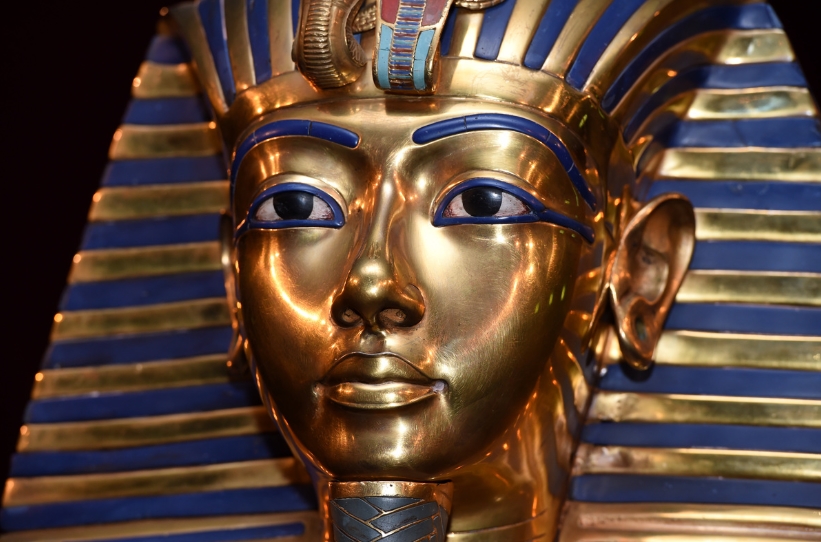
[adiqted_pagination]
Some people are so influential that they shape the course of history. However, there is only so much we can do to understand what these important people actually looked like. Though many of them were captured in paintings and sculptures by talented artists, it was common for these to be adjusted to ensure the subject looked their best. Think of it as an old-fashioned version of the Photoshopping and airbrushing we see today.
It’s no secret that historical figures were often portrayed very differently from how they looked in real life. When it comes to the portraits of many familiar faces, we have to take them with a grain of salt. The pictures of famous figures that you remember are not representations of reality. However, thanks to the wonders of science, we are now able to get a glimpse at their true forms. The following pictures reveal everything.
King Tut

The Egyptian pharaoh Tutankhamun, more commonly known as King Tut, was arguably the most famous of the ancient Egyptians. It is thanks to Howard Carter’s excavation in 1922 that we are able to see the face of the infamous pharaoh.
Tutankhamen was a boy-king who ruled for 10 years, and it is believed that he died from an infected broken leg. DNA studies on his mummy have shown that he also suffered from a bone disorder that made his skeleton quite fragile. On top of this, he endured several bouts of malaria and a cleft palate.
Emperor Nero

Nero ruled Rome from 54 to 68 CE and was the last emperor of the Julio-Claudian dynasty. Nero’s reign began with the assassination of his mother. He was a popular emperor, but his reputation plummeted due to his massive tax increases and excessive spending.
The Nero figure in the image above is a recreation of the Roman Emperor made by Spanish artists in 2019. This model was based on descriptions, drawings, and busts of Nero. It is believed that he started the great fire of Rome to achieve his political agenda. When he killed himself, legend has it that he said, “What an artist dies in me!”
Robert the Bruce

Robert’s victories in Scotland earned him the nickname “the Hammer of the Scots,” but he was also known as an able leader and a responsible king. He set up sound government institutions and finally settled Scotland’s long-standing dispute with the English. In 1314, he obtained a charter from King Edward II of England recognizing Scotland’s right to independence.
If you’ve ever wondered what the face of Robert I looked like, well, now you know. Researchers at the University of Glasgow used casts from the skull believed to belong to the king of Scots in order to create a bust using Face Lab technology. The bust was made using plasticine and human hair, while researchers also used historical and archaeological evidence to create Robert I’s likeness.
Julius Caesar

Caesar was a general and politician whose military conquests expanded the Roman Republic. He crossed the Rhine River and later invaded Britain, but after refusing to step down from command to avoid arrest, he re-entered Rome, triggering a civil war.
This bust was created from a scan of a Roman marble portrait of Julius Caesar. Caesar, one of Rome’s greatest military leaders, rose to power after winning the Roman civil war in 45 BCE. He then became a dictator. Caesar proved himself to be a relatively fair leader but was assassinated by members of the Roman Senate in 44 BCE.
Nefertiti

The most famous bust of Nefertiti is believed to have been created by the sculptor Thutmose in Amarna, Egypt in 1345 BCE. The sculpture was discovered in Thutmose’s workshop in 1912. However, with 3D imaging, experts were able to determine what this ancient queen might have truthfully looked like in person.
Elizabeth Daynes is a London-based paleoartist who recreated Nefertiti’s face and received widespread media and public attention for her work. The recreation of Nefertiti was commissioned by The Travel Channel’s documentary show Expedition Unknown. There was some controversy surrounding the color of the Egyptian queen’s skin.

![5 Reasons You Should Travel Alone Airplane [image source: chau nguyen/ http://thedevilhatessweatpants.blogspot.com.au ], crowd ink, crowdink, crowdink.com, crowdink.com.au](https://crowdink.com/wp-content/uploads/2016/08/Chau-airplane-218x150.jpg)























